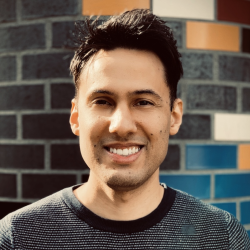How to learn anything
Have you ever had a teacher or instructor who explained things in a way that was difficult to understand? You are not alone.
A man named Richard Feynman, a physicist and intellectual who won the Nobel Prize in 1965, had a special talent for clarifying the mystery of complex scientific principles, such as particle physics and explaining them to students without much knowledge on the subject.
Feynman knew that learning doesn't happen by skimming through a book or memorizing enough information to pass a test. Information is learned when you can explain it and use it in different situations.
He developed a method that became known as the Feynman Learning Technique, a 4-step process for understanding any topic that favors comprehension over memorization:
1. Choose a subject to learn
At the top of a blank page write the subject you are interested in learning about. Be specific and start with a topic small enough for one or a few pages. Every time you find new sources of information, add them to this note.
2. Imagine teaching this to a child
Write down everything you know about the subject as if you were teaching it to a child. Remember that children have a much more limited vocabulary and attention span than adults. This exercise will help you identify gaps in knowledge about the subject, which are critical to the learning process.
3. Go back to the reference materials
If you get stuck, go back to the source of what you are trying to learn and clarify things. You can also look for additional sources.
4. Simplify and try to make analogies
Add analogies, they are easier to remember and explain. If besides understanding a challenging concept, you are able to relate and illustrate it by making analogies, chances are you actually understand and know what you are talking about. The ultimate test is to try to transmit this material to some other person who does not know much about it.
Conclusion
A very common mistake is to read an article or watch a video and consider our learning complete. But, real understanding requires a more active activity like teaching. Start by writing summaries in your own words without looking at the original material. Try explaining it to yourself out loud. Then, when you are confident (or not) try to teach it to other people.
💭 Reflection
“We take other men’s knowledge and opinions upon trust; which is an idle and superficial learning. We must make them our own. We are just like a man who, needing fire, went to a neighbor’s house to fetch it, and finding a very good one there, sat down to warm himself without remembering to carry any back home. What good does it do us to have our belly full of meat if it is not digested, if it is not transformed into us, if it does not nourish and support us?” — Michel de Montaigne
Get more from your notes
I send occasional email updates with tutorials, links to articles, and content that I recently enjoyed. I'd love for you to join.

